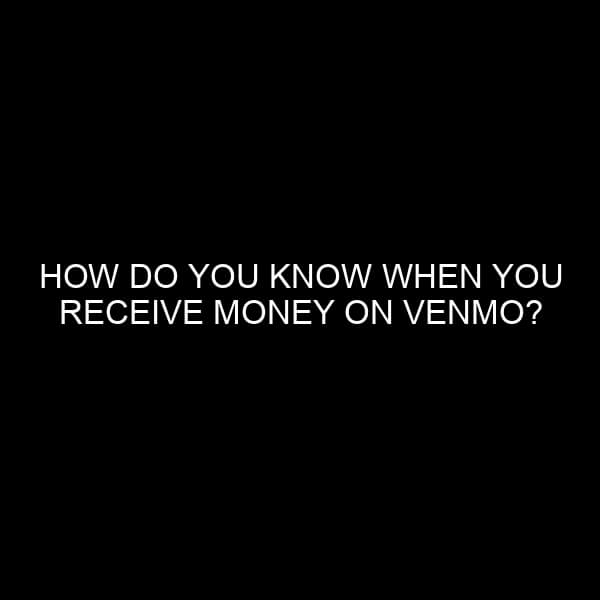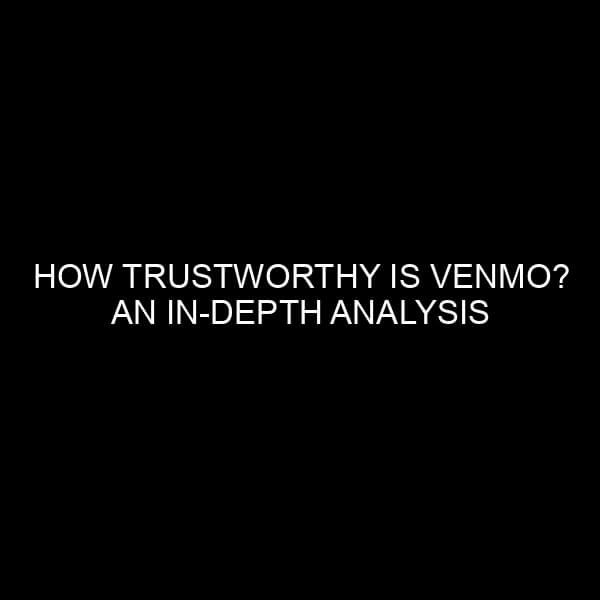How Do You Know When You Receive Money on Venmo? A Financial Expert’s Insight
The digital age has transformed many aspects of our lives, including the ways we handle money. Venmo, a mobile payment service owned by PayPal, has become one of the go-to methods for people to send and receive money in a swift, convenient, and cashless manner. With its ease of use and social features, Venmo has amassed millions of users, revolutionizing the peer-to-peer payment industry. But how can you be sure you’ve received money on Venmo, and what measures should you take to ensure the security of your transactions? This article delves deep into the nuances of Venmo notifications and provides insights for both novices and seasoned users.
Understanding the Basics of Venmo Transactions
To fully grasp the notification features and transaction processes on Venmo, one must first understand the basics of how the platform functions.
- Setting up your Venmo Account: Upon downloading the app and creating an account, you’ll be prompted to link your bank account or debit/credit card. This is crucial for transferring money into or out of Venmo.
- Sending and Receiving Money: Once your account is set up, you can easily search for contacts using their phone number, email, or Venmo username. When money is sent or received, Venmo acts as a digital wallet, holding the funds until they are withdrawn to a bank account or spent within the app.
Notification Alerts: Your First Indication of Received Money
Venmo has an efficient notification system that immediately alerts users when money is received. Here’s how to recognize these notifications:
- Push Notifications: If you’ve enabled push notifications for the Venmo app, you’ll get an instant alert on your smartphone. This is the fastest way to know about received money. The message typically reads something like, “John Doe sent you $50 on Venmo.”
- Email Notifications: Along with the push notification, Venmo sends an email to the registered email address with details about the received payment. This serves as an additional reminder and a way to track transactions.
- In-app Notification: Upon opening the Venmo app, there’s a “Notifications” section that provides a list of all recent activities, including received payments.
Verifying Received Funds: The Importance of Double-Checking
While notifications are reliable, it’s a good financial practice to double-check the funds in your account.
- Checking Your Venmo Balance: Your balance is prominently displayed at the top of the Venmo app. Whenever you receive money, this balance should reflect the updated amount.
- Transaction History: Go to the “Menu” and select “Statement” or “Transactions.” This section provides a detailed breakdown of all your Venmo activities, allowing you to verify received funds, along with the sender’s name, amount, and any attached notes.
Ensuring Transaction Security on Venmo
Given the digital nature of Venmo transactions, users must be aware of the platform’s security features and best practices.
- Two-Factor Authentication (2FA): Activating 2FA adds an additional layer of security. When logging in, you’ll receive a code on your phone, which must be entered along with your password.
- Avoid Public Transactions: By default, Venmo transactions are public, meaning others can see who you paid (though not the amount or the note). Always change your transactions to “Private” unless you have a good reason to share them.
- Use Familiar Networks: When accessing Venmo, especially for substantial transactions, use networks you trust. Public Wi-Fi networks can sometimes be less secure.
Drawing Connections: Venmo in the Broader Financial Ecosystem
Having a background in the financial market and banking industry, I understand how innovations like Venmo are embedded in a larger ecosystem. While Venmo makes transactions simple, the backend is supported by robust financial infrastructures. Each transaction leverages bank-level encryption to protect users’ financial data. Moreover, Venmo’s rise is testament to the broader trend of digital banking and fintech solutions taking precedence in our daily lives.
Conclusion
Receiving money on Venmo is straightforward, with multiple notification avenues ensuring users are always in the know. However, like any financial transaction, it’s always prudent to double-check, ensuring that the funds have indeed been credited to your account. With cyber threats looming, users must be proactive in securing their transactions and understanding the broader financial frameworks that Venmo operates within. By following best practices and being vigilant, Venmo can be a safe, efficient, and modern way to manage peer-to-peer transactions.






